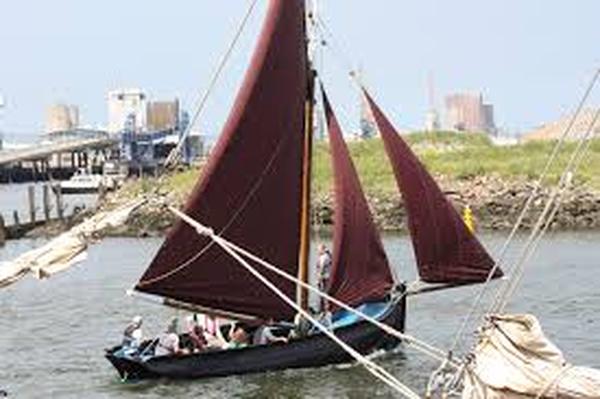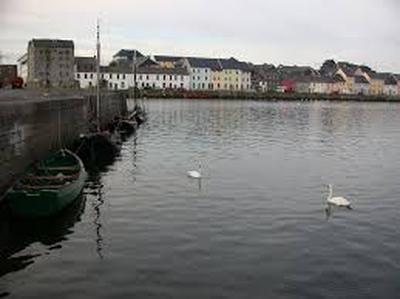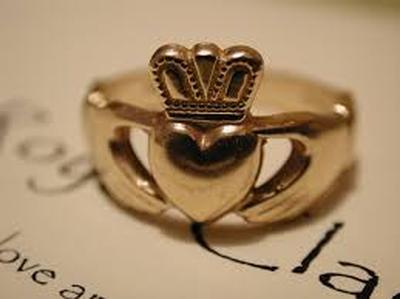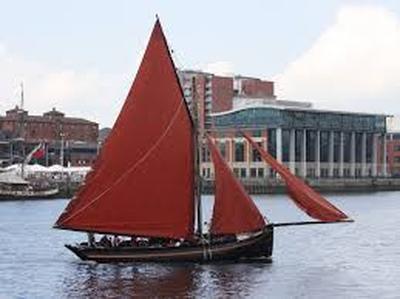
View all banners
FAFB will never call you and ask for your credit card details over the phone. If this happens, hang up!


Every region of the world has its own distinct design of traditional fishing boats. Vessels that have been specifically adapted through the ages to suit the incumbent weather and sea conditions as well as to the type of fishing that is native to the area. It’s a fascinating reflection of both the social history of local fishing as well as the geography. From design and structure to the materials in use, traditional fishing boats have an identity of their own that is often cherished by local people.
In a series of articles we will be looking at various fishing boats and how they have been shaped and adapted over the years as well as their influence in local and wider communities. In this, the first article, we will be looking at the Galway Hooker.
Situated on the west coast of Ireland the harbour in Galway is now a bustling passenger and freight port and can accommodate vessels up to 10,000 tonnes (DWT). The city lies on the River Corrib and nestles between Galway Bay and Lough Corrib and it is to the area along the west bank of the river that the hooker has its origins. The area is known as The Claddagh and is acknowledged to be the oldest fishing community in Ireland as well as being famous for the well-known Claddagh Ring which depicts two hands holding a heart. Governed outside of the enclaves of Galway city, the community were mainly fisher folk and elected a ‘king’ who would rule their ways, settling disputes with locals and keeping the peace. The ‘king’ would wear a white sail on his boat so that he could be readily identified. The people were, until very recently, an isolated and self-sufficient community and put the sea at the heart of everything they did from customs and traditions to superstitions. Superstitions such as each boat having to have an oat-cake, salt and ashes on board, that it was bad luck to pick up any tool that was not related to fishing. Men who inadvertently handled a spade or a plough could expect to be banished from the village. Sailors who saw a red-haired woman or a hare on their way to the boat would simply abandon that days sea-faring plans, such was the bad omen they represented. Unless that was, of course, if a crow flew over the boat and cawed then this could be taken as a wholly good sign!
The ‘king’ would lead the fishing fleets to sea and had absolute power over the community. However, the ‘king’ was not an autocrat but rather a democratically elected individual who would be voted in by his peers each year on 23rd June.
Meaning ‘stony shore’, the Claddagh history emerges from research around the 5th century, pre-dating the arrival of Christianity to Irish shores. The community had sole fishing rights in the Galway Bay and would take their produce across the river to the inhabitants of the walled city of Galway to sell. Evidence suggests that any persons found to be fishing in the Bay would have had their nets and boats destroyed by order of the ‘king’.
In the peak of its operations, Claddagh had over 500 families with over 800 fishermen crewing about 80 boats however, as younger inhabitants began to migrate to the city the village’s output began to decline until a tuberculosis outbreak in the 1920’s forced many inhabitants to be relocated and Claddagh’s influence in the local fishing industry fell away. By 1934 the whole village had been destroyed in an attempt to cleanse and regenerate the area and none of the original buildings survive today. What remains is a school, a church and a handful of homes that mark this important fishing village. The traditions of the ‘king’ remained until very recently with the last such holder of the title, Martin Oliver, dying in 1972.

The story begins in the 16th century when the greatest risk to fishermen, apart from the tumultuous Atlantic Ocean, was the threat of pirates. Local legend has it that a crew of Claddagh men were captured by Spanish pirates and transported to Northern Africa where they were to be sold into slavery. One of the crew, a young man named Richardm had just met his one true love and was distraught at the thought of never returning to her. The story goes that over the years of his captivity he stole a small piece of gold each from his slavemasters and, over time, fashioned a ring (the Claddagh Ring) in the hope that, despite the seeming impossibility of it, he would one day return to his love and be able to present her with it. It is not certain whether Richard escaped or was set free but he did return to Ireland and found that his love had remained true and, using the ring he had made, they wed. The rings became popular in the community as a result of the romantic story and were peculiar only to this area over many centuries, perhaps because they were the only heirloom of any worth in these poor fishing families to pass to the next generation.

The boat of choice in the community of Claddagh, the Hooker was specifically developed to cope with the strong seas off the Galway Bay and can be immediately identified by its single mast with two foresails as well as a mainsail and the strong, bluff bow with a clean and sharp entry, raked transom and distinctive wide, curving tumblehome. Being traditionally coated in pitch the boats are mostly black with its sails being either reddish brown or black. There are suggestions that the design has some influences from the Cornish boats of the time as well as from Norway but strong evidence is missing to make this connection for sure.
The construction was typically of oak (frames) as well as larch (planks) and provided a sturdy and robust vessel that was both quick and adaptable to allow the fishing crews to navigate the treacherous channels of the Galway Bay. The vessels were also used to transport cargo from other coastal villages as well as to and from the Aran Islands.
‘Hookers’ were so-called due to the fact that the fishermen used long-lining as their preferred method of fishing. Drawn through the water, the baited hooks would be used to catch a variety of local fish including sole, haddock, mackerel and herring. It was the women’s job to mend and bait the lines so that the boats could be perpetually at sea.
There are four varieties of Hooker with the largest being the Mór, which is approximately 35 to 44 feet in length. The second largest is the half boat, or Leath Bhád, measuring around 32 feet and two other boats measuring between 24 and 28 feet, the Gleoiteog and the Púcán.
There has been a strong interest in reviving the Galway Hooker in recent years and a community of fishermen (Claddagh Boatmen) in the local area has committed themselves to constructing replicas of these once abundant vessels. The revival has lead to the inclusion of the Hooker in the Cruinniú na mBád festival. Held each year from Kinvara, this event showcases the beauty and speed of the boats as races are staged across the Galway Bay.
The area is stunning to explore and there is no better way to do so than from the sea. Local company, Galway Bay Boat Tours offer some great trips to experience the local area. The company has a strong connection with the area with one of the owners being related to the last Claddagh 'king'.
However you discover Galway, we hope you will mention Find a Fishing Boat on your travels.
